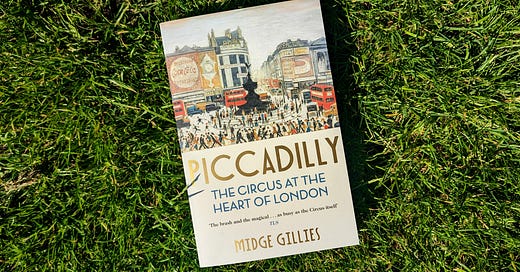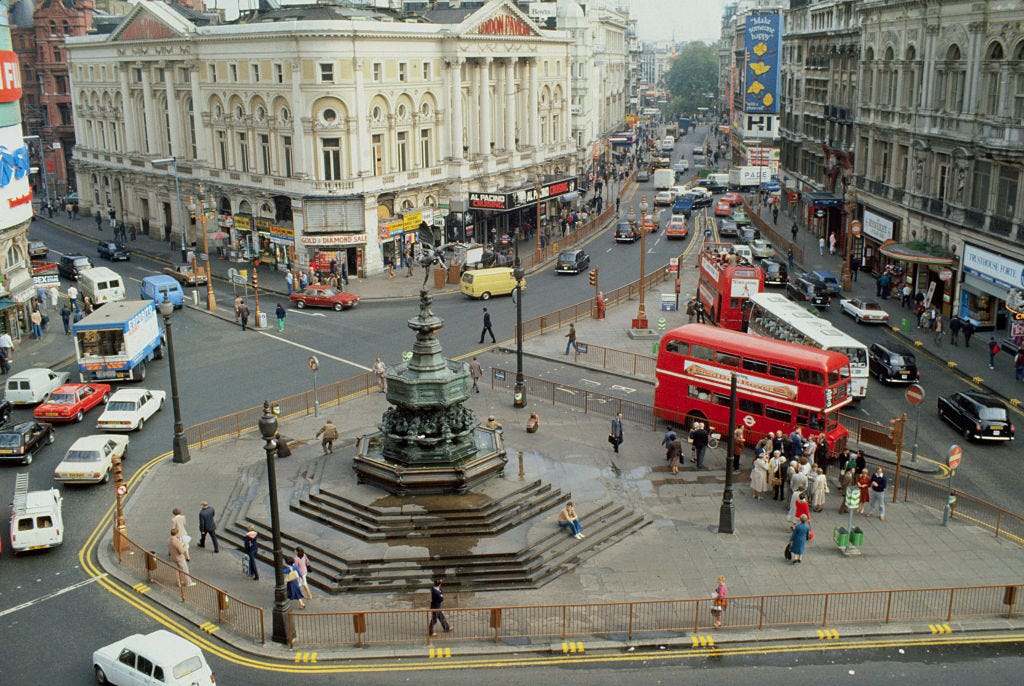We’re back from our summer break with this interview with the fascinating Midge Gillies, whose most recent book is a brilliant social history of Piccadilly Circus. We’re still easing ourselves back in, so there’s no news headlines at the bottom of this issue, but hopefully there’s enough here to keep you entertained.
As always, our Monday issue is completely free to read, but if you’d like to support us, then you can become a LiB supporter for £5 a month or £50 a year. The only reason we don’t have to run adverts or take money from sponsors is because hundreds of people choose to support what we’re doing.
If you become a subscriber then you’ll start getting our Wednesday issues as well as access to the entire back catalogue of paywalled articles, including our growing ‘Before You Go’ series, in which we visit some of London’s most beloved but endangered spots; and our ‘Electric Theatre’ series, where a different contributor writes about one of their favourite examples of London on film every month.
Midge Gillies is many things. She’s a journalist who has written for titles like The Guardian and the Los Angeles Times; she’s a creative writing tutor; and she’s also written plenty of books herself, including biographies of both the music hall singer Marie Lloyd and Amy Johnson, the first woman to fly solo from London to Australia.
Her latest book though is not a biography of a person, It’s the story of ‘the circus at the heart of London’, aka Piccadilly. Beginning with the arrival of Eros in 1893, the book tells the story of the next 50 years or so through the eyes of the flower girls, shop assistants, celebrities and sex workers who passed through that magical ‘third magnetic pole’ that sits at the bottom of Shaftesbury Avenue.
The book came out in paperback a couple of weeks ago, which is when we sat down with Midge to ask her why she decided to write an entire book about Piccadilly Circus, how close we came to destroying it, and who exactly the Piccadilly Commandoes were.
Hi Midge. Before we get into talking about the book we need to ask you the same question we ask everyone, which is ‘What’s your relationship to London?’.
My connection is really my mum. She grew up in Balham and I spent the first two years of my life in Pinner. After university I came back to work in London and stayed for about 15 years working as a journalist. I’m not there anymore but I go back quite a lot because my daughter is a student at Goldsmiths.
The obvious next question is what made you want to write an entire book about Piccadilly Circus?
Again, it was partly my mum because she used to talk very fondly about the Lyons Cornerhouse teashop. So, when I lived in London I used to love going to Piccadilly Circus because I felt it was a place where something a bit unexpected might happen. Even now when I go I’m completely in awe of it because I think there's nowhere quite like it in London.
The other thing that pulled me in was my interest in the Second World War. I’m fascinated by the story of the Café de Paris and the bombing there during the war. I originally wanted to write - if you can believe it - a whole book about the Café de Paris, because I think it’s got so many elements of chance in it along with lots of strange characters. My publisher said “No, you must write a book about Piccadilly Circus,” and actually it really suited me because I love social history. I love writing about things like shopping and transport (but not in a nerdy kind of way) and sex and music. In the end I really liked the idea of writing a biography of a place.
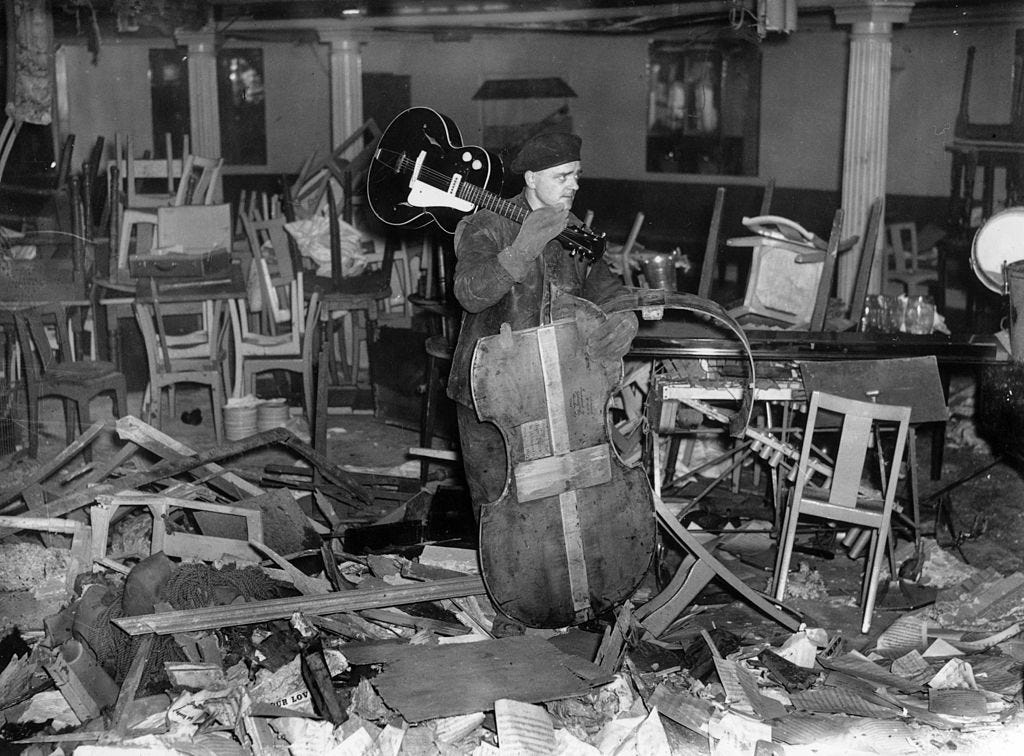
The structure of the book is really clever. It’s chronological, as you’d expect, going from the turn of the 20th Century up to the end of the Second World War. But within that there’s certain themes that you return to all the way through, like the shops and entertainment, transport and advertising. You use those themes to tell some really personal and fascinating stories. Did you have that structure set out from the beginning or did it evolve through your research?
I teach creative writing and I’m really fascinated about how you structure a book and how you structure the ‘life’ of a place; so I really enjoyed that part. I didn’t want it to be too hard for the reader to follow, so it does have that broadly chronological narrative, but within that there are some themes that I hope provide threads throughout. One of those is Eros1 because Alfred Gilbert the sculptor has quite a tragic story, and even the model for the statue was a really interesting character. But also the fact that the statue moves around the Circus over time, and the way he reflects social change; because, at first, people were very shocked by this scantily clad statue being in a place that’s well known for prostitution.
One of the other threads in the book is the history of the lights. Piccadilly Circus has always been this place of bright lights, so I was able to follow the technological advances there, but the subject lends itself to other themes. Cinema, for example, and how Hitchcock was obsessed with Piccadilly Circus.
I actually had a whole chapter which didn’t make it into the final book about Hitchcock’s Sabotage, his film based on the Conrad novel. At the end of the film a boy on a bus is delivering what he thinks is film reel, but it’s actually a bomb, which goes off as they reach Piccadilly Circus.
One of the other things you come back a few times in the book is this idea of Piccadilly Circus being the ‘people’s meeting place’. Can you explain a bit more about what you mean by that?
It’s a really strange place, Piccadilly Circus, because it’s liminal in that it can take you in all sorts of various directions, from shopping to protests, through Soho or to Theatreland. The Circus itself is a place to come together and pause between those different, discrete areas.
I think also, there’s a feeling that you could meet anyone there. There used to be a saying that if you stood there long enough, you’d meet everyone you’ve ever known. And still, today, people make a beeline for it, because there’s so much happening and it has this sort of natural energy. I think part of that is the lighting - it always seems brighter than the rest of London, and that means it’s always been a kind of natural meeting place and a place for celebration. If you think back through history, from the Relief of Mafeking, to the end of the First and Second World Wars, right up to big football tournaments, Piccadilly Circus always seems like the place people go to let off steam.
Was there anything that you found out during your research that really surprised you or you weren’t expecting?
So many things! I was really surprised by the story of Angelo Colarossi, who was the model for Eros. He’s such a sad character, because he started off as this beautiful young boy and then he kind of shuffles through history and becomes more and more like an office clerk. By the time the Second World War comes, he’s used to try and sell war bonds and there’s this photograph of him in his tank top and jacket. Also, there’s the fact that his son died in the Second World War in a plane, which for me is a poignant link to a time when Angelo was a god with wings.
Victor Barker was another story that took me by surprise. He was a concierge at the Regent Palace Hotel. He was six-feet-tall, a Colonel in the war with a Distinguished Service Order medal, who had been married twice and had two children from a third relationship. But he was also a trans person. It’s an incredible story and one that I didn’t know at all before writing this book.
You talk in the book about Piccadilly Circus being a crucible for social change, and it was really interesting to read all these examples, like the story of Victor Barker, but also how welcoming Lyons Corner House was to gay men, and the history of Rainbow Corner and the Piccadilly Commandoes - which I’d definitely never heard of!
I’d never had anything about Rainbow Corner either and it’s such an interesting place; this ‘home from home’ for American servicemen during World War Two, which was open twenty-four-hours a day and had eight Stars and Stripes flags flying outside.
Again you’ve got these amazing characters like Adele ‘Dellie’ Astaire (Fred’s sister), coming in to the picture; along with Irene Whittaker, the woman who started mending uniforms for the GIs. They all thought she must be an aristocrat and called her ‘Lady Whittaker’ but in reality her father rented horse and carriages in the East End. Irene ended up having two bomber planes named after her!
The Piccadilly Commandoes was the name given to the prostitutes who would stand outside the Rainbow Corner to pick up the GIs by shining a torch beam at their ankles or saying ‘‘Hello Yank, looking for a good time?”. Apparently, if you were a guest at the Regent Palace Hotel and you asked the receptionist for an ‘extra pillow’ then you would likely end up with a Piccadilly Commando.
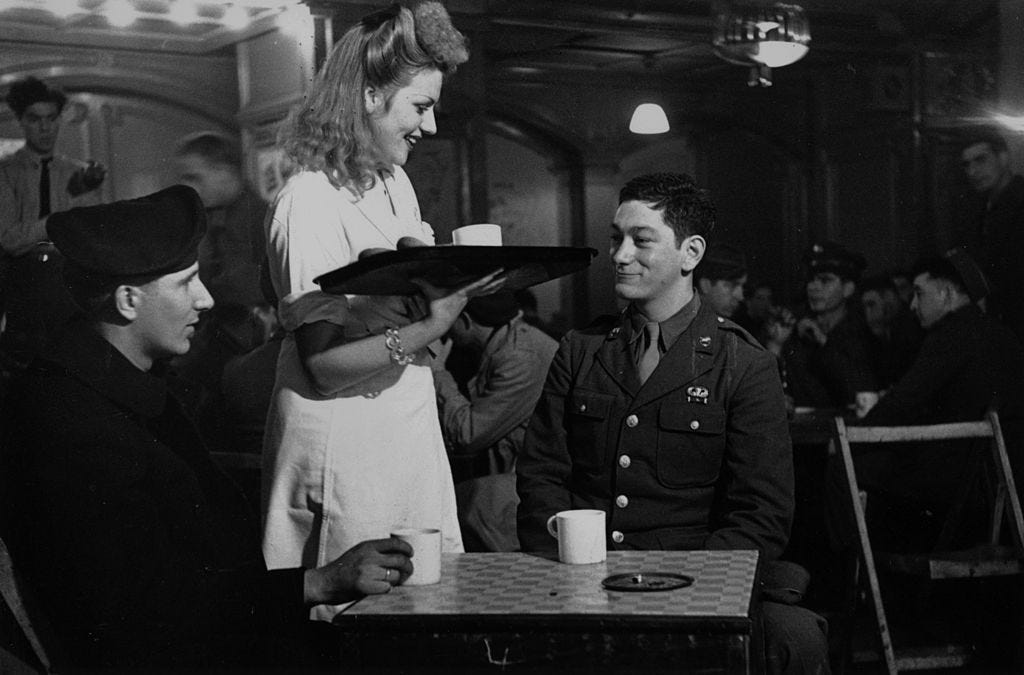
The shops play a pretty big part in the book too. Lillywhites and Simpsons being the obvious ones, but I didn’t expect to be so interested in the history of Boots the Chemist!
I hadn’t expected the shops to be so interesting either. Simpsons is fascinating because there’s this whole idea that they had to educate men how to shop. But Boots in Piccadilly was their first twenty-four hour, seven-days-a-week shop; and when the British Medical Journal reported that the adder population in Epping Forest was increasing, Boots announced that they were stocking the antivenom serum in their Piccadilly Circus branch. This was before the NHS of course! It’s said that Prince Charles had the temperature of his first ever bath checked using a thermometer bought from that Boots store on a Sunday afternoon in 1948.
I think one of the most amazing shop stories though is the one of ‘Phroso’ the ‘man-doll’ who appeared in the window of the Swan & Edgar store as a PR stunt. The crowd outside was told that anyone who could make the ‘doll’ smile or blink would be rewarded with ten pounds, which would be around £1,000 in today’s money. They got so excited they nearly ended up smashing the window and Phroso had to flee.
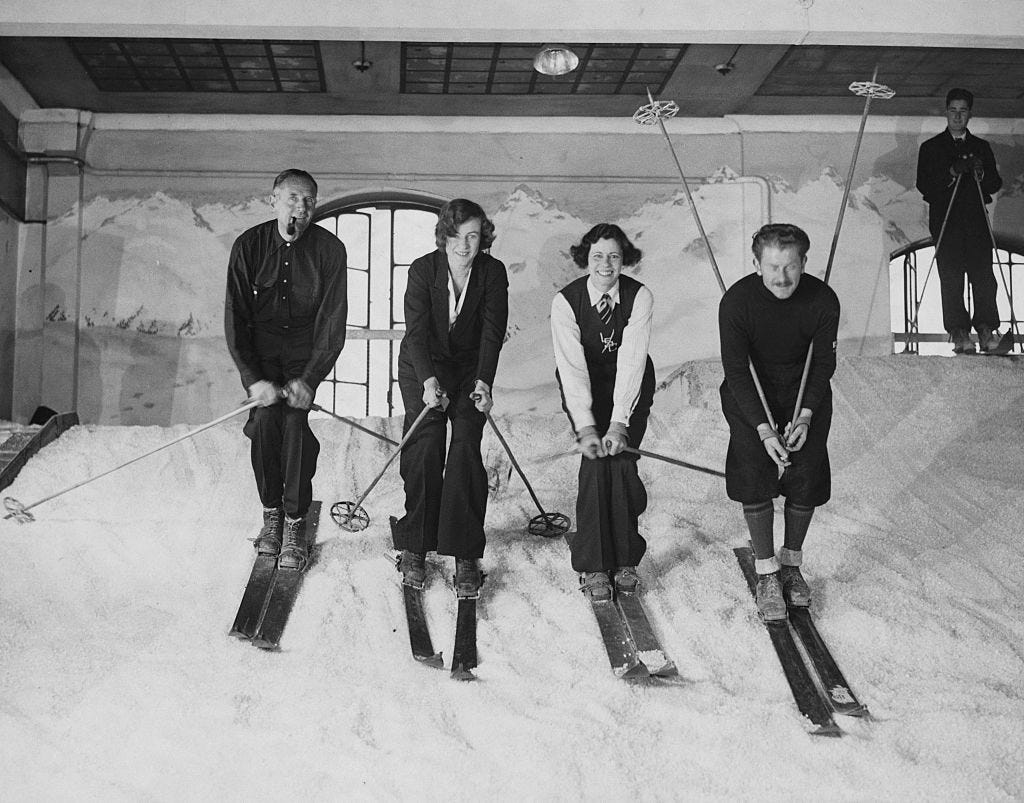
I think what a lot of people mind find surprising is how close we came to losing Piccadilly Circus as we know it in the 60s and the 70s. Because it almost feels like one of those timeless London places that could never change too much.
It’s still possible to look at Piccadilly Circus and be transported back to the past, I think.
Some things change, like the digital screens that are there now. But it’s still essentially advertising isn’t it? People say it’s been sanitised, and it has some extent in that it’s cleaner, but I still think I’m risking my life when I try and get across it, so it’s still got that edge. And there’s still those little things like the blue police box in the corner and, of course, the Criterion Theatre is still there. I don’t see how they could ever change that, because it’s so tiny and compact that you couldn’t possibly alter it.
But in the 60s there were attempts to redevelop it and turn it into a motorway flyover surrounded by buildings that look like cereal boxes. It would have been awful! I like the fact that, because of who owns it and who’s got different rights to the land, Piccadilly Circus is always going to be a bit of a hodgepodge.
Lastly, who did you write this book for? Who do you think will enjoy it (and should buy it, obviously)?
I suppose the book has a lot of stories about women in there. So, I hope anyone who is interested in women’s history would read it; and there’s a lot of stories about underrepresented people, I hope they would be interested. There’s quite a bit about film, theatre and music hall in there. It’s got wars and trains in it too, so it’s probably a bit of a ‘dad book’ as well!
You can buy Piccadilly: The Circus at the Heart of London from Bookshop.org (or if you pop into Waterstones on Piccadilly of course).

